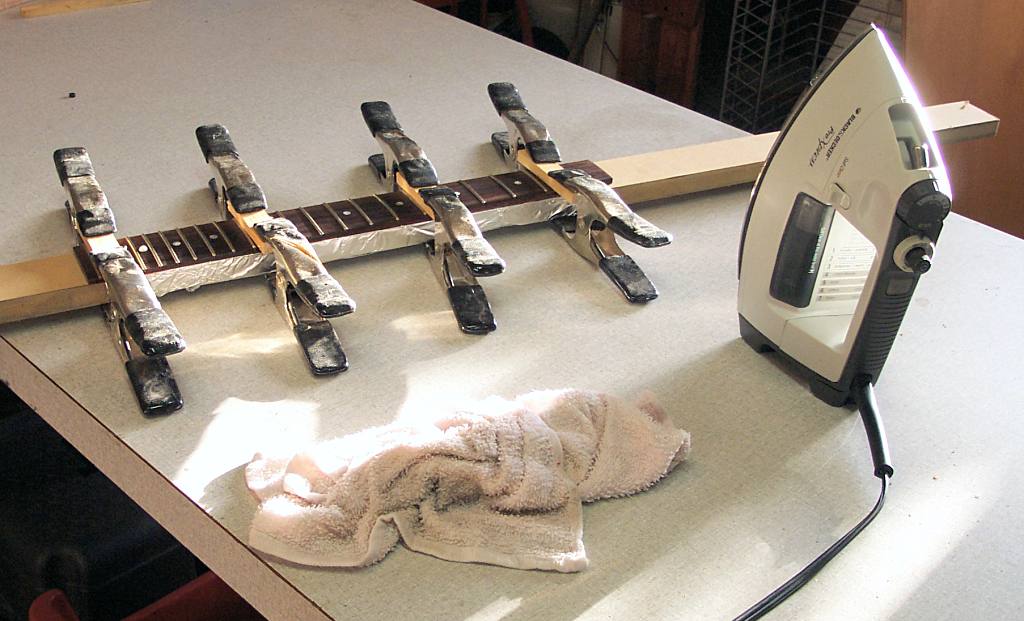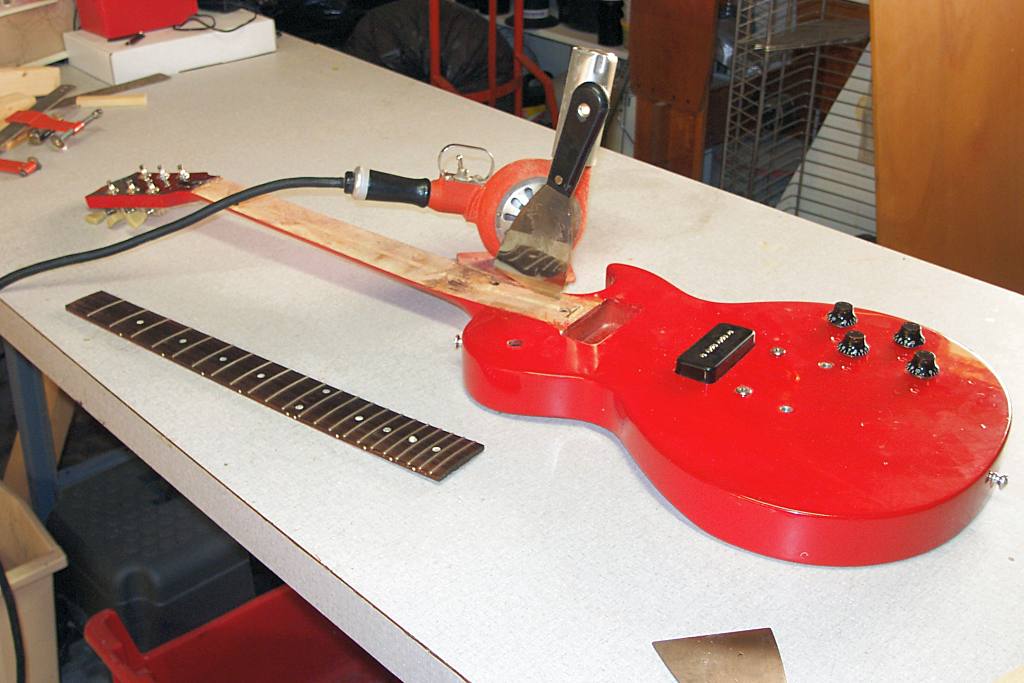
Ken's
Gibson "Les Paul Special" Guitar Neck Repair Page
Last Update 03-25-2002
These pages will chronicle the repair of a 1998 Gibson Les Paul Special S/N 93238540 whose "broken neck" allowed me to purchase it at a reasonable cost from the original owner - I was motivated to perform the repair myself when I discovered that Gibson charges about $1000 for a neck replacement on this model! Hey, I can work cheaper than that!
To remove the fretboard, I used a heat gun and a thin putty knife, using care not to overheat the rosewood and avoid burning it. The fretboard removal only took about 30 minutes, it will be easier if you have a friend's help, as I did.
Here is what it looked like:

You can see the bend in the neck clearly in this photo. It is cracked under the region of darker grain and should be able to be glued once the neck is removed.
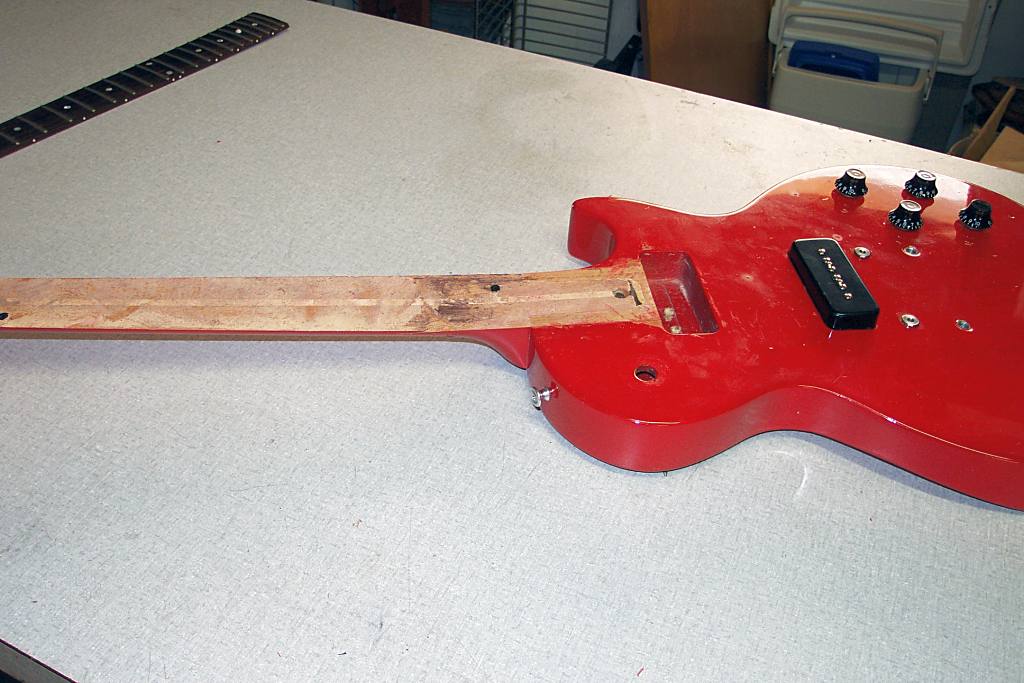
A closer view of the top of the cracked region.
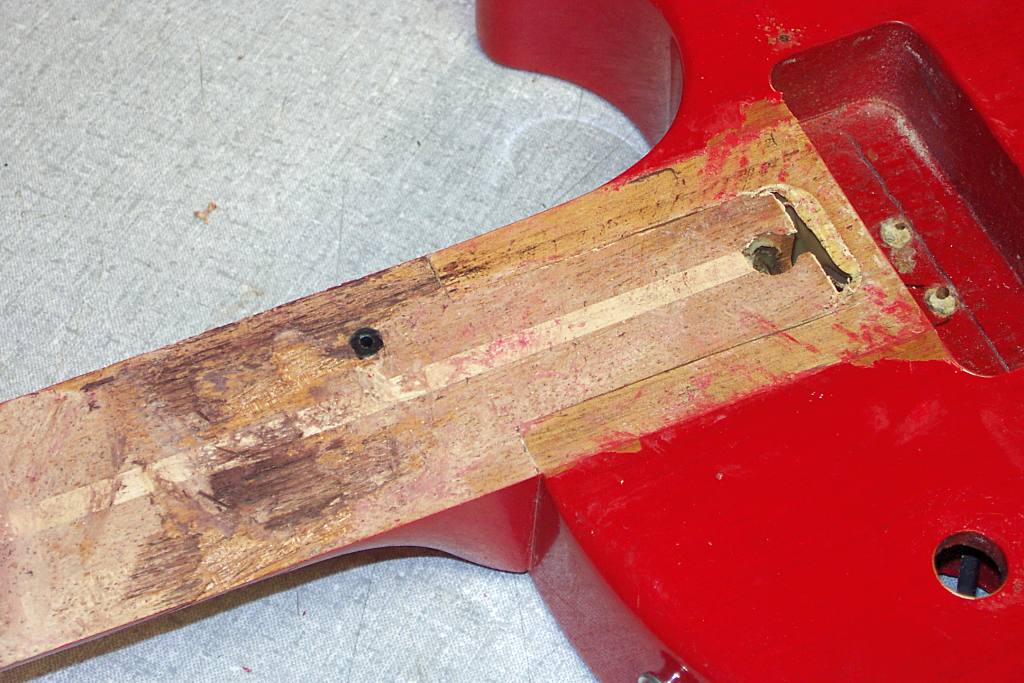
Here's the crack, it is not clean through, but it is also separating from the body.
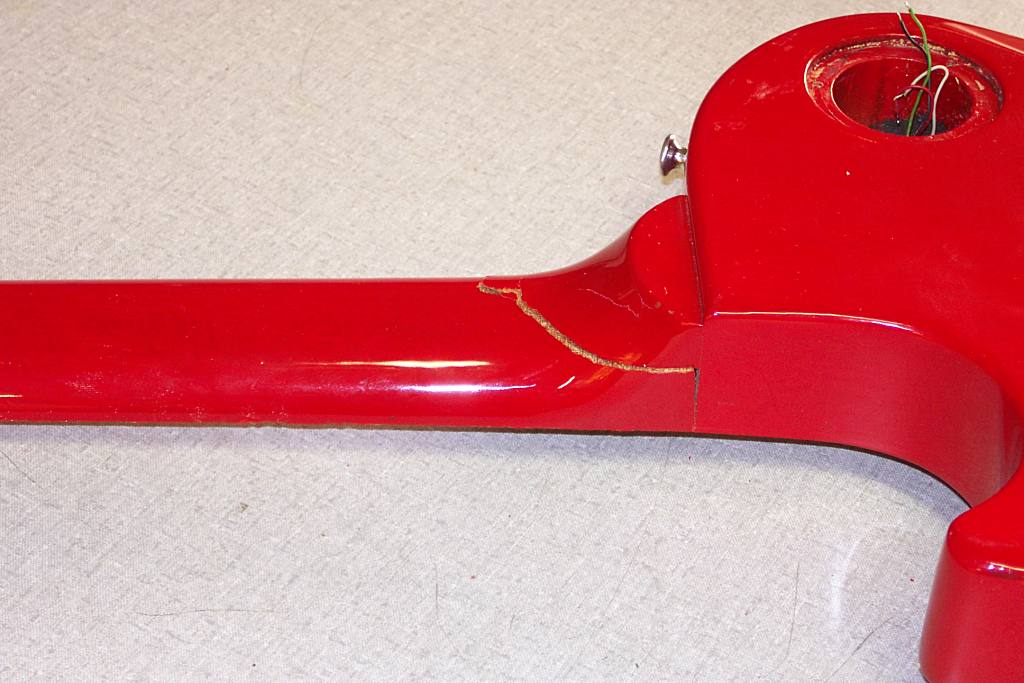
I was able to separate the body and neck by heating a thin putty knife on a hotplate, and sliding it between the glue lines. The only one I could not reach was the hidden bottom surface of the neck pocket. To soften this glue I kept injecting water into the cut glue lines. After a few hours of letting the water work its way in, I hit the area with the heat gun and wiggled the neck out.
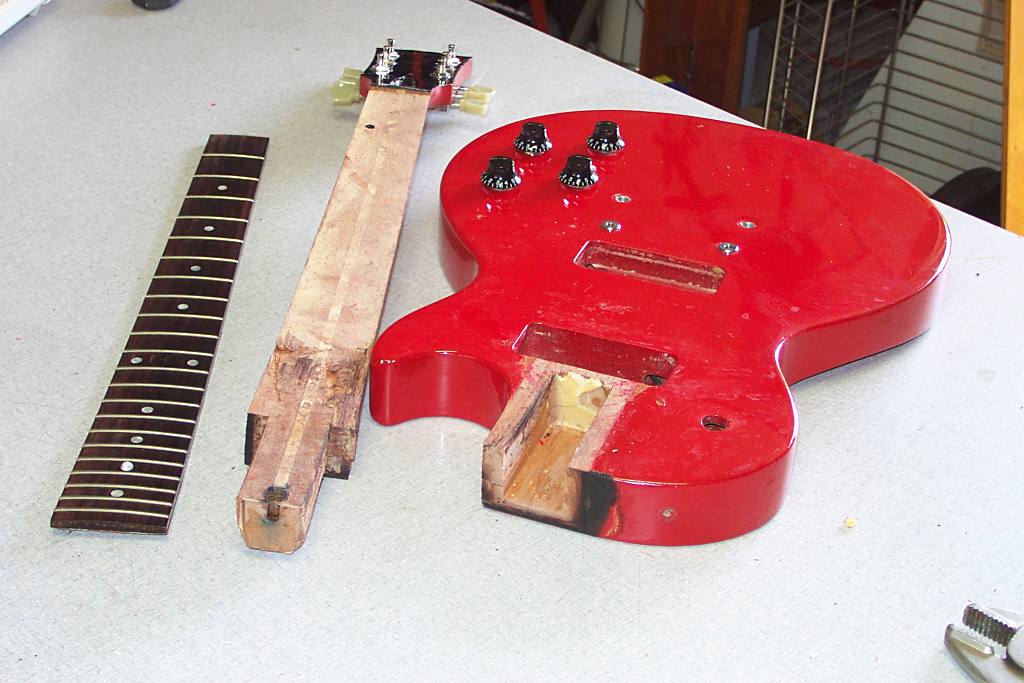
I've found that heating wood in this fashion seems to soften some component of the wood, and when it cools, it tends to maintain the shape it was clamped in. It may exhibit a little springback, but I decided not to overcompensate this first time, I'll wait to see how it comes out.
